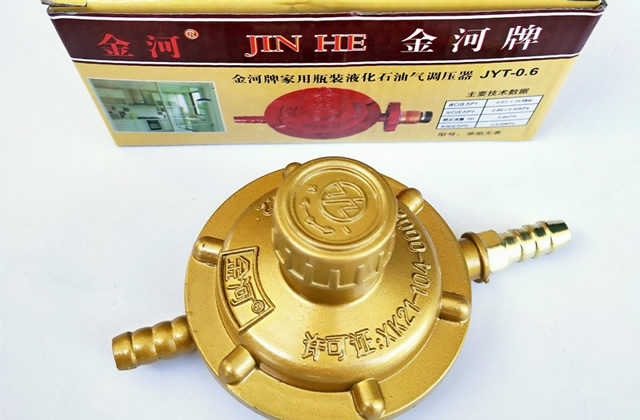1. What is a gas pressure regulator?
Gas pressure regulator, commonly known as pressure reducing valve, is also called gas pressure regulating valve. It automatically changes A device that regulates the gas flow through the valve to maintain the specified pressure of the outlet gas. Usually divided into two types: direct action type and indirect action type.
A pressure regulator is a special valve on the gas pipeline. It is a device that can maintain stable downstream pressure regardless of changes in gas flow and upstream pressure. The pressure regulator should be able to reduce the upstream pressure to a stable downstream pressure; when the pressure regulator fails, it should be able to limit the downstream pressure within a safe range.

2. Structural principles of gas pressure regulator
1. Direct-acting pressure regulator
It is composed of a measuring element (diaphragm), a transmission component (valve stem) and a regulating mechanism (valve). When the air consumption after the outlet increases or the inlet pressure decreases, the outlet pressure drops. At this time, the pressure reflected by the pressure guide tube makes the force acting on the lower side of the membrane less than the force of the weight (or spring) on the membrane, and the membrane drops. The valve disc also moves downward along with the valve stem, causing the valve to open wider, the gas flow rate increases, and the outlet pressure returns to the original given value. On the contrary, when the air consumption after the outlet decreases or the inlet pressure increases, the valve is closed and the flow rate decreases, which still restores the outlet pressure. The outlet pressure value can be set by the weight of the adjusting weight or the spring force. Small LPG pressure reducing valves and consumer regulators are direct-operated.
2. Indirect-acting pressure regulator
It consists of a main pressure regulator, a pilot and an exhaust valve. When the outlet pressure p2 is lower than the given value, the pilot membrane drops, causing the pilot valve to open, and the throttled gas with a pressure of p3 is replenished to the space under the membrane of the main pressure regulator. Since p3 is larger than p2, the main pressure regulator valve is opened larger, the flow rate increases, and p2 returns to the given value. On the contrary, when p2 exceeds the given value, the pilot film rises, causing the valve to close. At the same time, due to the force acting on the lower side of the exhaust valve membrane, the exhaust valve opens, and a part of the gas with a pressure of p3 is discharged into the atmosphere, which reduces the force on the lower side of the main pressure regulator membrane, and because p2 is too large, the gas The valve of the main pressure regulator is closed, and p2 returns to the given value. Gas storage and distribution stations, regional pressure regulating stations and pressure regulating stations dedicated to large users basically all use indirect action pressure regulation.device. The safe gas pressure for water heaters and gas stoves using liquefied petroleum gas in my country is 2800Pa. The gas pressure in the bottled liquefied petroleum gas cylinder is generally 4kg. The gas pressure is reduced to 0.028kg (i.e. 2800Pa) through the pressure reducing valve in front of the cylinder. For use with water heaters or gas stoves.
3. Axial flow pressure regulator
The axial flow pressure regulator is a kind of novel structure, tight sealing, large flow capacity and pressure regulation. Stable command-type pressure regulator. The internal parts of the pressure regulator are made of stainless steel. It has a long service life. It has the function of automatic shut-off when overpressure and automatic opening when the pressure returns to normal. The installation space is small and can be installed in any position. It is suitable for city gate stations. , regional pressure regulating station and gas turbine gas supply, can be used for natural gas, liquefied petroleum gas, air and other non-corrosive gases.
Working principle: The pressure regulator consists of five parts: the air inlet valve body, the air inlet connection body, the air outlet connection body, the air outlet valve body, and the pilot. The air inlet connection body is equipped with a main valve pressure regulating spring, High-pressure air cylinder sleeve, sealing film, etc. A fixed valve seat is installed in the outlet valve body, and the valve seat and the high-pressure air cylinder sleeve form a sealing pair. When the pilot is closed, the high-pressure air cylinder is sleeved on the main valve spring and tightly attached to the fixed valve seat to close the medium in the pressure regulator; when the pilot is opened, the seal is sealed under the action of the pilot air. The rubber film pulls the sealing film pressure plate to compress the spring, causing the high-pressure air cylinder sleeve to leave the fixed valve seat. The larger the command valve opens, the larger the gap between the high-pressure air cylinder sleeve and the fixed valve seat, thereby realizing the function of adjusting the air flow pressure and flow rate.
If the website content violates your rights, please contact us to delete it。








